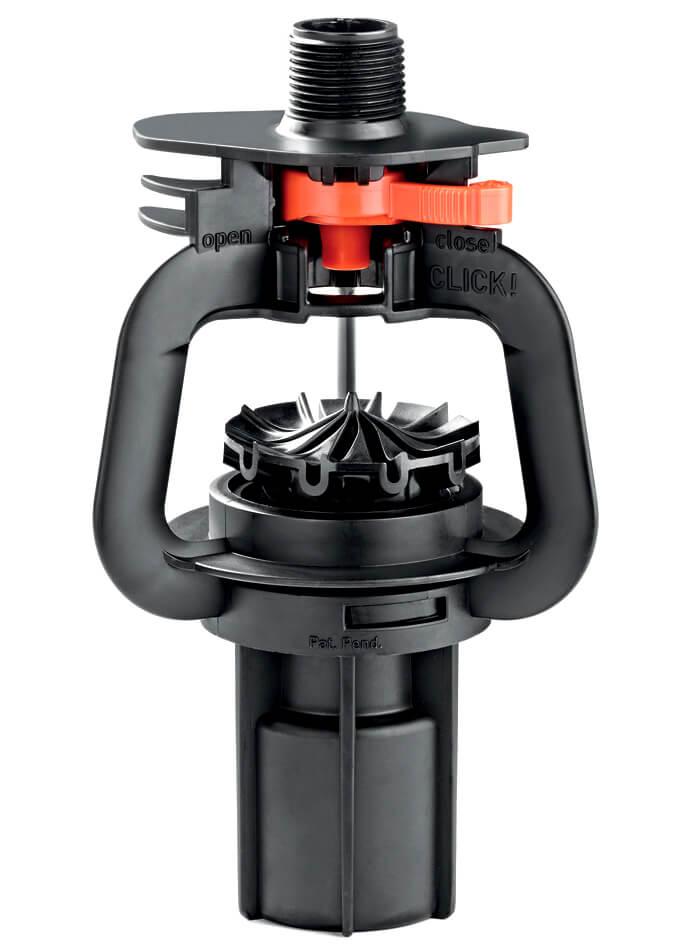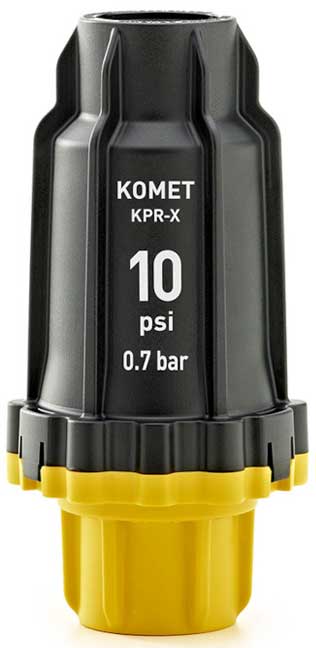- Kolver Mulke irrigates multiple crops with the Komet Precision Twister (KPT)
- Using KPR-X pressure regulators, he adjusts the droplet size to different soils
- By matching the application intensity of the water to the infilatration rate of the soil, he achieves optimal irrigation – every single time

As every experienced farmer knows, crop irrigation is a delicate business. To achieve the right interplay between water, plant and soil, several factors must be aligned. This includes the relationship between the impact force (i.e. size) of the droplets, and the speed at which the water can be absorbed into the soil.
Much of it is down to soil composition: “With larger soil particles, you get more open spaces between them, which makes it easier for the water to pass through”, irrigation expert Francois Davel explains. “Fields with a high content of coarse sand will therefore have a fast infiltration rate – whereas soil types with small, tightly packed particles, such as clay and silt, are at greater risk of runoffs and compaction.” Good irrigation results, Francois emphasizes, can be achieved with virtually any soil: one key step is to always match the application rate of your sprinkler to the infiltration rate of your soil.

Kolver Mulke manages to maintain this fine balance across a broad range of scenarios. His farm in the Northern Cape province, South Africa, has been in his family for the last two generations. Over the past five years, he has replaced the various sprinkler packages on his center pivots with one exceptional all-rounder: the Komet Precision Twister (KPT).
The entire farm – from the sunflowers, potato, onion, maize, wheat and alfalfa crops all the way to the Brangus cattle pastures – is now irrigated by this versatile center pivot sprinkler, known for its uniformly-sized droplets and long service life.

As well as a wide range of crops, Kolver has to cater for a variety of soil types. He does this by adjusting the droplet size of his pivot sprinklers based on the familiar principle of “the higher the pressure, the smaller the droplets”.
In his clay-heavy fields, Kolver tends to use KPR-X 15 PSI pressure regulators, especially at the end of the pivot and for the early stages of small seeds. The result: slightly smaller droplets and a lower instantaneous application rate. This, in turn, lowers the risk of compaction and ensures proper infiltration of the tightly packed soil.
When it comes to the farm’s sandy soils with a higher infiltration rate, he likes to pair the KPTs with 10 PSI regulators. This produces slightly larger droplets, which are less vulnerable to wind drift and evaporation – a great advantage in the hot and windy summer months.
And lastly, there is the grazing pasture for the farm’s Brangus cattle. This area has very different irrigation needs, namely high volumes of water distributed in a short space of time. In this instance, too, the KPT proves its bandwidth and performs well with its ultra-precise droplet selection.

Given that Kolver works with valuable stud cattle and high-cost crops, reliability is a key trait he looks for in a pivot sprinkler – along with quality, durability and, of course, efficiency. The highly engineered KPT, with its low-wear design, patented brake system and uniform distribution pattern, certainly covers it all.
Find out more about irrigating different soil types in our next Komet Academy, contact us for further details, or get in touch with your region’s Komet representative!

